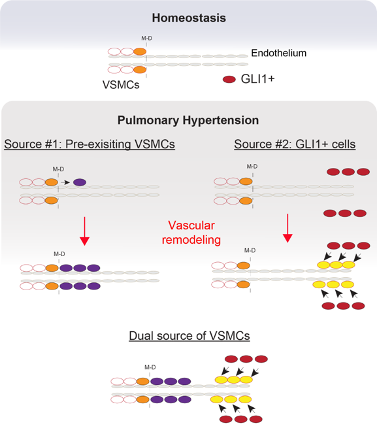Menu
close

Pulmonary hypertension (PH) causes high blood pressure in the lungs due to changes in the muscularization of blood vessels, making them stiffer and harder for blood to flow through. Untreated, this can eventually lead to heart failure. Researcher Xuran Chu and ILH colleagues from the JLU Gießen found an important therapeutic target for the treatment of PH.
Vascular smooth muscle cells (VSMCs) increase pulmonary vascular resistance and stiffness as they emerge around blood vessels during PH. Until today it is assumed, that new VSCMs derive from already existing VSMCs that expand distally along the vascular tree.
With the use of two independent models of PH in mice (Hypoxia and cigarette smoke exposure) Chu et al. show a major additional source of VSMCs during PH pathogenesis. Selective ablation of mesenchymal cells expressing the sonic hedgehog target gene glioma-associated oncogene 1 (Gil1) attenuates PH development in mice. Chu et al. show evidence that their findings are translatable to human Group 1 and Group 3 PH and therefore open a new avenue for testing novel therapeutic interventions.
Source: March 2024 (cpi-online.de)